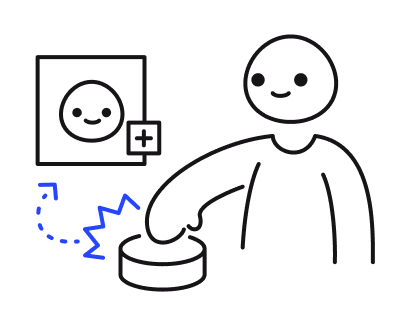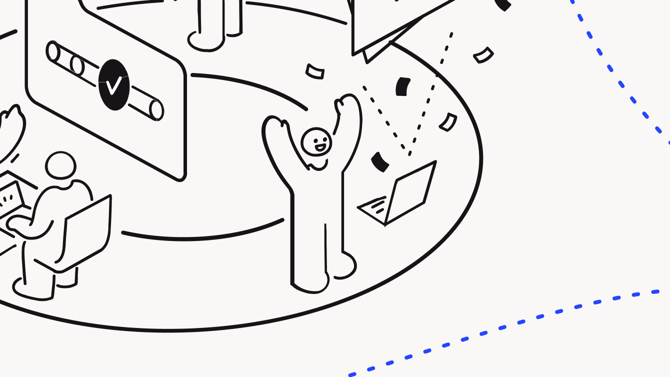Streamline, organize, and automate your onboarding process like magic.

What's in this article
The differences between good versus bad onboarding can be obvious — some less so. So what makes an onboarding experience a bad one? What are the hallmarks of a good one? And what are the potential risks, like turnover rates, and their costs, if onboarding isn’t improved?
Good vs. bad onboarding: what’s the difference?
Onboarding should constantly evolve to meet the ever-changing needs of employees. Aiming for perfection from the get-go is unrealistic. That said, there are ways you can identify if your onboarding strategy is meeting today’s standards or if it’s missing the mark.
In the end, the real difference between good and bad onboarding is found in the numbers. Lower levels of employee morale and productivity, and missed revenue targets, point to lousy onboarding. Higher levels of employee engagement, performance, and cultural integration can be credited to good onboarding.
How to spot bad onboarding
A bad onboarding process can be one that doesn’t include enough content, or it creates so much work that it takes away from core objectives. It could also be the case where onboarding experiences aren’t cohesive across different teams.
There are many possible ways onboarding can fall short. Here are tell-tale signs of bad onboarding:
- Paperwork-heavy: Proper onboarding shouldn’t add more work, so if yours is process-
- The process moves too quickly: Well-thought-out onboarding cycles around 12 months, as there are essential checkpoints to anticipate even after the initial welcoming phase. Onboarding that lasts a single day is a red flag.
- There are no defined objectives: Onboarding should set multiple goals for new employees. Some goals are shared, like learning about corporate culture. While some might be unique to the individual and their role. Objectives should be clear and time-bound, mapped out on a timeline.
- There are not enough follow-ups: Support is everything, especially for new employees. Ensuring that follow-ups are regularly scheduled, be it as one-on-ones or informal check-ins, even after the initial training period is over, makes all the difference.
Setting the standard: What good onboarding should look like
There are two ways to ensure your onboarding experience meets expectations: avoiding the above and going the extra mile. The hallmarks of good onboarding include:
- Set clear expectations: The worst thing about being new to a role is feeling lost in what to do next. Good onboarding means setting goals, tasks, and deadlines for new employees, so they know what is expected of them.
- Prioritize formal and social learning: Standard corporate training and social integration are equally important for new employees to connect with their new role and the company culture. Make sure to balance tasks that fulfill both types of learning throughout the onboarding plan.
- Invite everyone to pitch in: Onboarding used to be reserved just for HR — but those days are long gone. Everyone should contribute to a new employee's onboarding experience: managers, team members, and company experts. Anyone with knowledge to share, welcoming energy, or indirect support to offer can help enhance an onboarding experience. Nothing showcases community values like collaboration.
- Creative and engaging content: There are ways you can reimagine onboarding moments for the better. Instead of having remote team members send text-based welcome emails, get them to record a welcome video message. Offer new employees a user-friendly platform where everything they need, from training materials to dynamic goals checklists, can live under the same roof.
Real and expensive: The consequences of poor onboarding
If onboarding a new employee has a cost, onboarding a new employee poorly has an even greater price. Let's break down some of these potential risks so you know what a proper onboarding process can prevent.
How bad onboarding impacts retention
Onboarding has a major influence on retention.
A solid onboarding strategy and execution ensures employees stick around. By improving their onboarding process, organizations see improved new hire retention rates by 82% and productivity increases by 70%.
On the flip side, bad onboarding is thought to be one of the major causes of employee turnover. When they do not receive a structured onboarding, 41% of employees consider looking for another job — and 22% of employees actually do. That’s 63% of employees who factor in onboarding before committing to a role long term.
Remember that employee turnover costs are high -- up to 200% of an employee’s salary each time. Poor onboarding is a problem companies can’t afford to ignore.
Is the impact of poor onboarding underestimated?
Onboarding is widely understood as critical to the employee journey, yet 76% of HR managers believe onboarding is underutilized.
There could be many factors at play: companies have not invested enough to update their onboarding practices, are lacking the right tools to onboard efficiently, or are not involving the right people to do good onboarding justice.
57% of managers feel they lack the capacity to be more involved in onboarding, so a lack of time and resources is a common barrier to improving the process.
But managers aren’t the only ones concerned — employees have their say too. Only 12% of employees feel their employers do a good job onboarding new hires, meaning 88% of employees feel onboarding could be improved.
It is important to listen to everyone involved in onboarding (from HR to the hiring manager, immediate team members, and more). They are the ones that can provide the most valuable insights and who are most impacted by poor onboarding.
Room to improve? How to know if your onboarding needs adjustment
Like any good business housekeeping, you need to routinely check in with your managers and employees and analyze whether your onboarding approach is up to snuff. It is important look at every aspect of your onboarding: strategies, plans, templates, tools.
Some questions to ask yourself to help you establish whether your onboarding approach needs revisiting:
☝️Is your onboarding creating more work than it should?
While personalization is important, and every onboarding deserves special attention, automation is also vital in making onboarding planning and execution efficient and productive. The last thing any company wants is to add more work than their teams can already manage.
Ask the people involved in onboarding — HR and managers — if they feel their current system creates more work for them. Good onboarding should be structured and strategic, not solely administrative.
☝️Do your tools enhance your onboarding experiences?
Good onboarding tactics avoid creating more work than needed for managers, and efficient tools help streamline the planning and management process. Unfortunately, 69% of managers feel that onboarding is too time-consuming.
Ease of experience for new employees is also crucial. Is the plan provided easy to understand? Is the format user-friendly? Are the tools provided easy-to-use, intuitive, and engaging? Do they help the employees access the right resources without wasting time? Good onboarding tools help newcomers feel motivated, get up to speed on their new organization’s processes and culture, and complete training faster.
☝️What do others think?
Ask around. Are the managers finding it easy or time-consuming to design onboarding plans? Are new employees feeling engaged and excited by their experience, or do they feel overwhelmed and confused?
The opinions of the people participating in onboarding — managers, new employees, and other participants — can be helpful. They are the ones going through the experience: their insights might help you spot less obvious gaps outside of technical aspects.
How to collect feedback:
- Anonymous surveys are good for honest insights.
- Routine 1:1s offer opportunities to ask how the onboarding is going.
What other ways can help you gain direct insights to understand where your onboarding might need improvement? Check out these 5 ways to collect honest employee feedback.
☝️What are the numbers telling you?
Nothing like hard numbers to tell you how it really is: 1/3 of new employees begin searching for another job within six months of being with their employer, and 1/4 leave before the one-year mark.
Considering onboarding sets the tone for the rest of the employment experience, high turnover rates amongst new employees are more than often linked back to poor onboarding.
Productivity and goal-reaching are also things to consider. What is the success rate of newcomers reaching onboarding milestones on time? Are tasks getting completed, or are they falling behind schedule? Onboarding tools that provide insight reports offer helpful in-progress visibility.
Better onboarding for the greater good
Onboarding is an integral part of the employee experience — and impacts the entire employee lifecycle. The challenge for companies remains: How can onboarding be improved to optimize integration, prevent short and long-term losses, and ensure new employees have everything they need to succeed and more?
Great onboarding sets up employees for success, and achieving this is possible with the right mindset, strategy, and tools.
Workleap Onboarding is a solution that addresses onboarding needs at all levels. A one-stop-shop platform to help managers build onboarding plans more efficiently, a place for new employees to integrate their roles and teams faster, where employers see higher levels of engagement and productivity all around.
Ready to make a change? Create your free Workleap Onboarding account and experience how improving your onboarding approach can help other aspects of your business.
Structure and automate your onboarding journey so newcomers hit the ground running.




